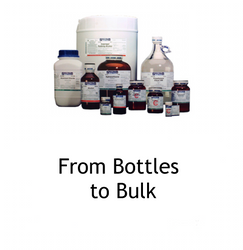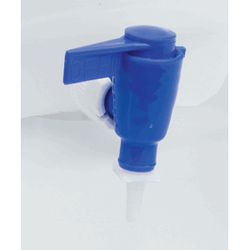Description
QuEChERS Dispersive SPE methods offer a convenient and effective approach for extraction and clean-up of pesticide residues in food and other complex matrices. The robust procedure offers a number of compelling advantages: high recoveries, accurate results, high sample throughput, low solvent and glassware usage, reduced labor and bench space and lower reagent costs. Each pack contains 2 mL centrifuge tubes pre-packed with sorbents.
Thermo Scientific™ HyperSep Dispersive SPE Clean-Up Products are available in a range of pre-prepared sorbent combinations, each containing the proper sorbents for optimum clean-up of analytes extracted using QuEChERS methods.
HyperSep Dispersive SPE Clean-Up Products contain PSA (primary/secondary amine) for the removal of organic acids and polar pigments among other compounds. Some products couple the PSA with endcapped C18 for the removal of most lipids and sterols, or graphitized carbon black for the removal of sterols and pigments such as chlorophyll.
QuEChERS Technique was developed by the USDA Eastern Regional Research Center in 2003, the QuEChERS (Quick, Easy, Cheap, Effective, Rugged and Safe) technique is increasingly becoming the technique of choice for extraction and clean-up of pesticide residues.
The QuEChERS method is a two-step process: extraction followed by clean-up. There are four variations of the QuEChERS method currently in use:
• The original QuEChERS method uses sodium chloride to enhance extraction
• Dispersive AOAC 2007.01 uses sodium acetate as a buffer, replacing sodium chloride
• The Dual-Phase variation introduces PSA and GCB to remove high levels of chlorophyll and plant sterols in the final extract without the loss of planar pesticides (polar aromatics) using an acetone:toluene solvent mix (3:1)
• European Version is similar to the AOAC method, except the extraction uses sodium chloride, sodium citrate dihydrate and disodium citrate sesquihydrate instead of sodium acetate
Image(s) are representative of the product group and not necessarily the individual product.
Sorbent 1: Anhydrous Magnesium Sulfate
Sorbent 1 Weight (mg): 150
Sorbent 2: PSA
Sorbent 2 Weight (mg): 150
Sorbent 1: Anhydrous Magnesium Sulfate
Sorbent 1 Weight (mg): 150
Sorbent 2: PSA
Sorbent 2 Weight (mg): 25
Sorbent 1: Anhydrous Magnesium Sulfate
Sorbent 1 Weight (mg): 150
Sorbent 2: PSA
Sorbent 2 Weight (mg): 25
Sorbent 3: C18
Sorbent 3 Weight (mg): 25
Sorbent 1: Anhydrous Magnesium Sulfate
Sorbent 1 Weight (mg): 150
Sorbent 2: PSA
Sorbent 2 Weight (mg): 25
Sorbent 3: GCB
Sorbent 3 Weight (mg): 2.5
Sorbent 1: Anhydrous Magnesium Sulfate
Sorbent 1 Weight (mg): 150
Sorbent 2: PSA
Sorbent 2 Weight (mg): 25
Sorbent 3: GCB
Sorbent 3 Weight (mg): 7.5
Sorbent 1: Anhydrous Magnesium Sulfate
Sorbent 1 Weight (mg): 150
Sorbent 2: PSA
Sorbent 2 Weight (mg): 50
Sorbent 1: Anhydrous Magnesium Sulfate
Sorbent 1 Weight (mg): 150
Sorbent 2: PSA
Sorbent 2 Weight (mg): 50
Sorbent 3: C18
Sorbent 3 Weight (mg): 50
Sorbent 1: Anhydrous Magnesium Sulfate
Sorbent 1 Weight (mg): 150
Sorbent 2: PSA
Sorbent 2 Weight (mg): 50
Sorbent 3: C18
Sorbent 3 Weight (mg): 50
Sorbent 4: GCB
Sorbent 4 Weight (mg): 50
Sorbent 1: Anhydrous Magnesium Sulfate
Sorbent 1 Weight (mg): 150
Sorbent 2: PSA
Sorbent 2 Weight (mg): 50
Sorbent 3: GCB
Sorbent 3 Weight (mg): 50
Sorbent 1: Anhydrous Magnesium Sulfate
Sorbent 1 Weight (mg): 150
Sorbent 2: PSA
Sorbent 2 Weight (mg): 50
Sorbent 3: chlorofiltr
Sorbent 3 Weight (mg): 50







